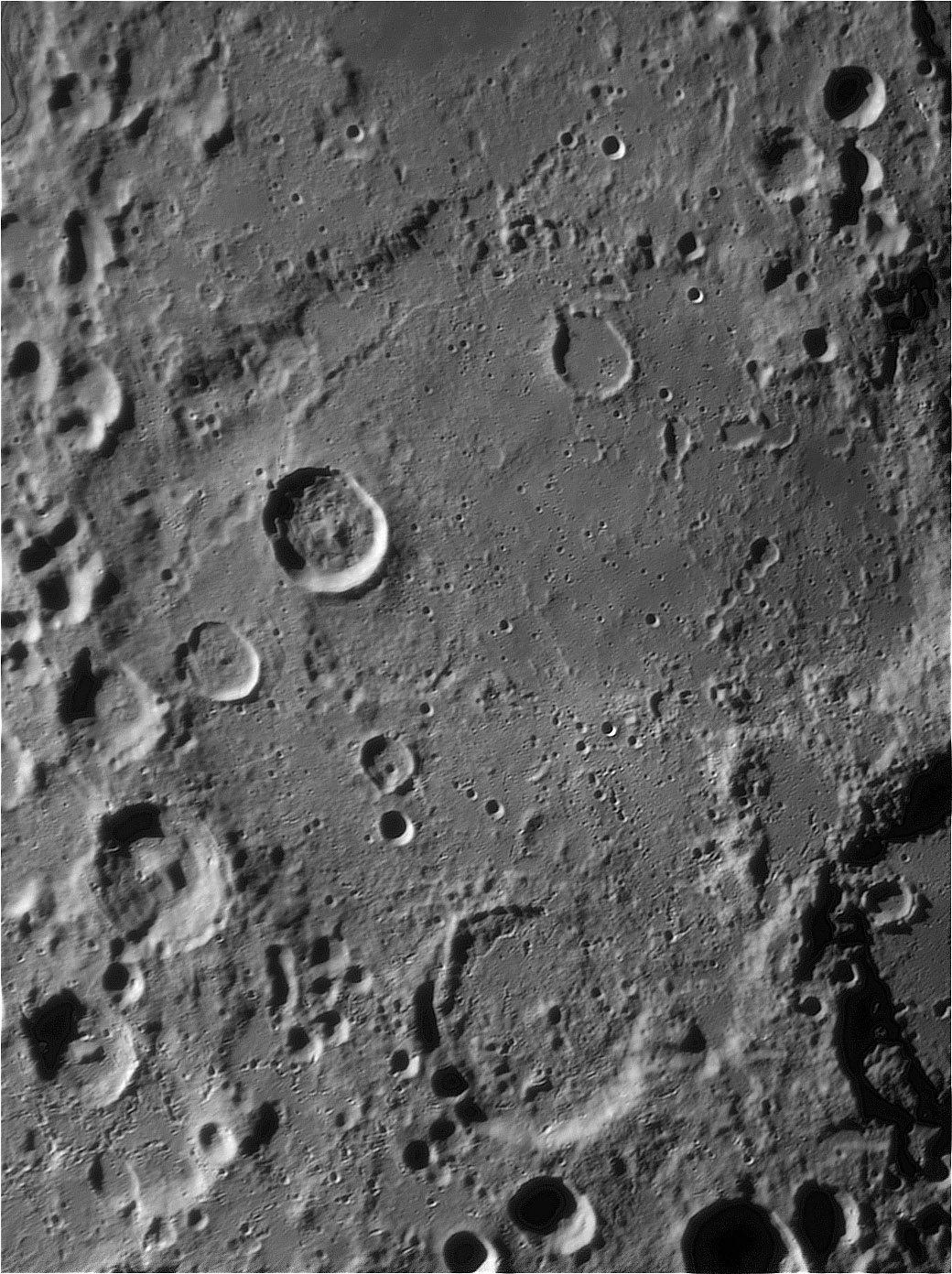
image by Wes Higgins
Every place on the Moon results from volcanism and impactism, with occasional faulting stemming from one or the other. This image shows an ancient 235 km wide crater that is dominated almost solely by impacts. Now called Deslandres, it was once called Hell Plain (because the crater Hell was the only named feature inside it) and later Wilkins and Moore named it Hörbiger. A small patch of dark mare material near the eastern rim and dark ash(?) inside Hell (look at full Moon) are the only certain volcanic deposits, although the floor of Deslandres must have been filled by some plains material (impact ejecta or older volcanism?) that shallowed it greatly. And filled in some craters such as Hell B and the older ruin just east of Hell which is full of a roughly textured material. Today the surface of the Hell Plain, like the surrounding area, is pitted by numerous impact craters of various origins. The tiny small ones and some of the larger such as Hell, Ball and Lexell are primary impact craters. But this area has a surprising number of crater chains of various sizes and ages; all secondary craters. Three or four chains run from the southwest to the northeast and you would expect their source to be in one of those directions, but no convincing source is obvious. Small, sharp secondary clusters and small chains, especially in the south part of the image are secondaries from Tycho. Presumably some of the older slightly smooth material inside Hörbiger and especially to the northwest is ejecta from the formation of Nubium, but that basin may be older than Deslandres. Humorum is also a possible source - notice the soft flow texture at the upper left that radiates from that basin. Finally, notice two last, presumably volcanic features: the short rille inside the rim of Lexell and the shallow rille curving around Hell A. By the way, did I mention that this is a sensational image?
Technical Details:
September 14, 2006, 18″ Starmaster reflector, 4x Powermate, Infinity 2-1M camera, stack of 371 frames. I only rotated this image to the right but it seems less sharp than Wes’ original…
Related Links:
Rükl plates 64 & 65
Wes’ website
Yesterday's LPOD: Selenestice
Tomorrow's LPOD: Bullialdus’ Bridge
COMMENTS?
Register, Log in, and join in the comments.



